Founded in 2004 by the Center for European Research Libraries (CERN), theeuropeanlibrary.org (TEL) is a portal for searching the holdings of 48 European national libraries and 60 additional major research libraries, including many university libraries. No new entries have been added since the site was frozen in December 2016, but this does not diminish its importance. I have found it very useful for my own research, and I have recommended it to a number of music library patrons, such as students doing original research for their dissertations and theses. Here are some of its highlights:
TEL’s homepage prominently displays its main search box:
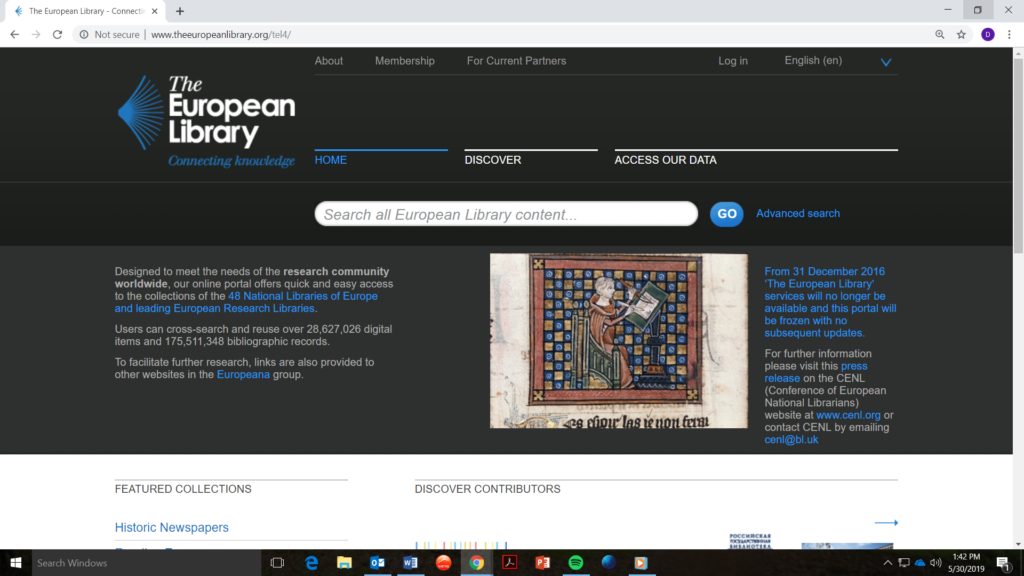
An advanced search screen links from it, but there is no option for customizing which type of material a searcher is interested in:
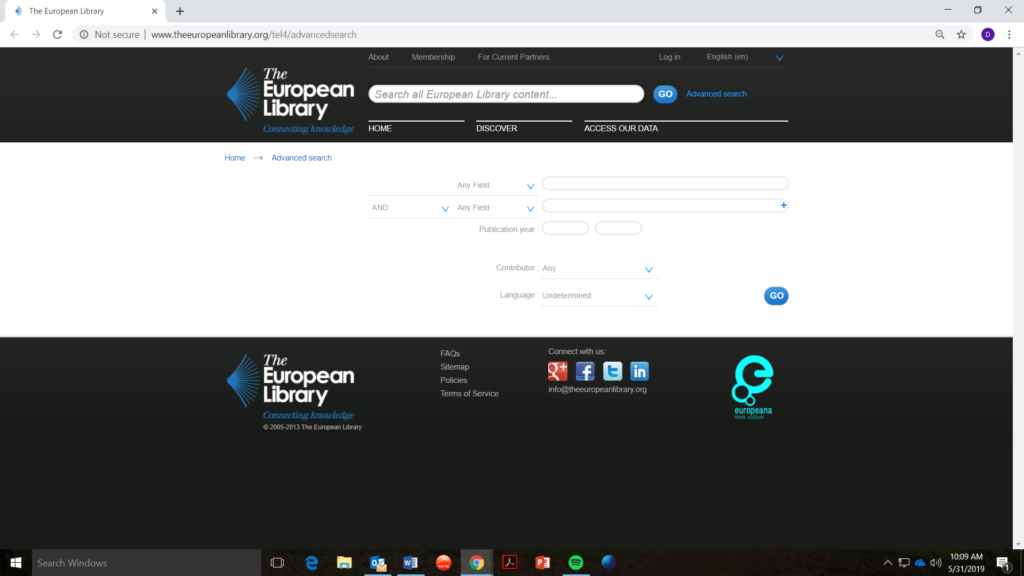
However, after a search has been started, further customization options appear. Here is an example:
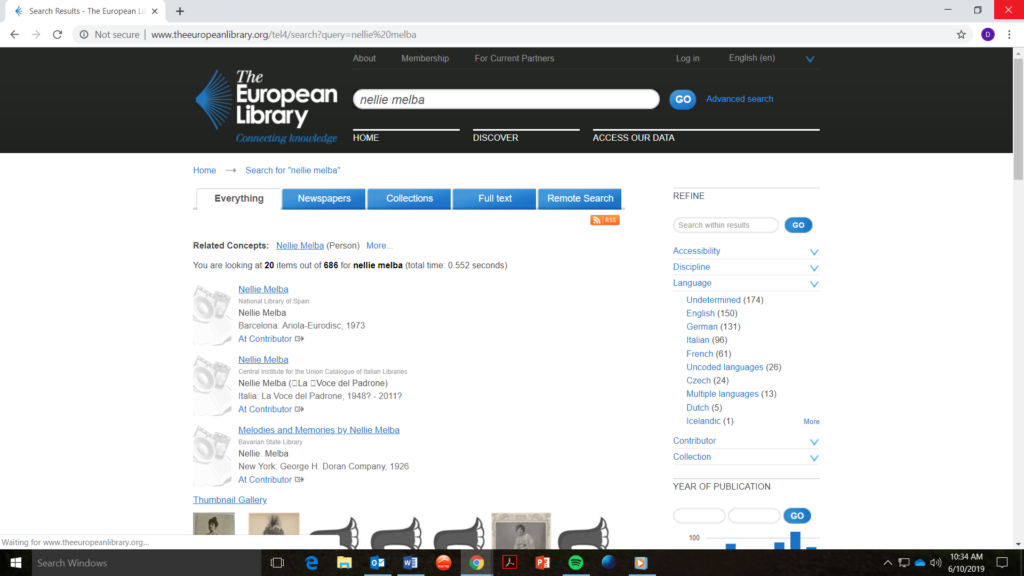
The results in a successful TEL search are easy to understand and
navigate. Each brief citation the search generates provides direct links to the
contributing library’s website. In book, score, and recording results, “At
Contributor” links go to the bibliographic records for the items in the
contributing libraries’ online catalogs, and if full text is available, there
will be “Access Online” links that go directly to them.
Full-text offerings of potential
interest to music researchers are available in several formats. For example,
some contributing libraries provide sound files of their historic recordings,
often including complete recordings of older, public-domain material:
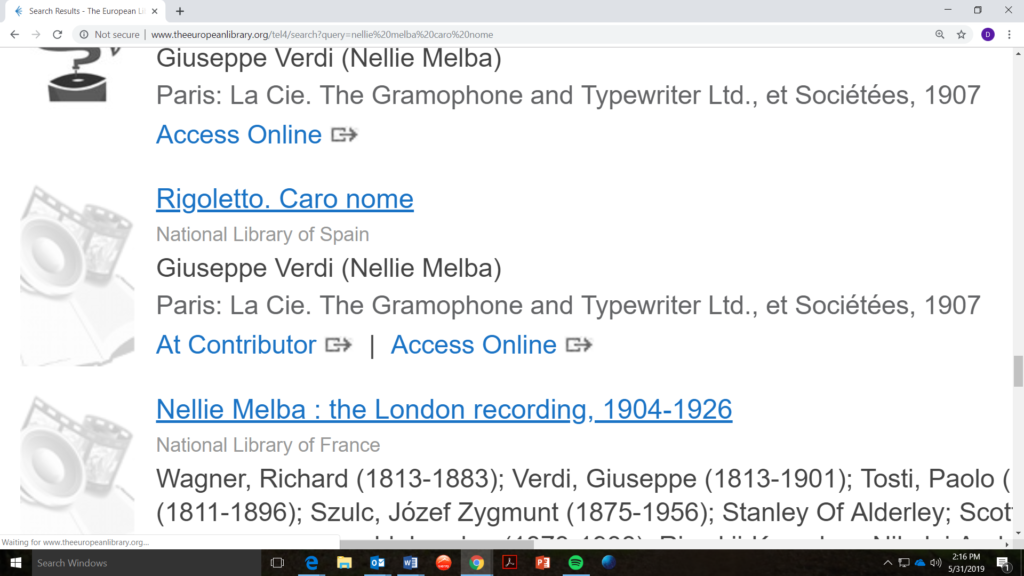
Clicking on the link for an item’s title in a brief citation – such as the one pictured above – brings up a detailed, Harvard-style citation provided by TEL. The “At Contributor” and “Access Online” links are repeated in that citation, and there is also a “Contributor” link to TEL’s information about the contributing library, including a link to its webpage. Finding correct URLs and contact information for research libraries in other countries can often be difficult and confusing, both for experienced and inexperienced library patrons. The difficulty is compounded when materials of interest are stored in special departments or collections that these patrons are unaware of. Thus, the following links in TEL are particularly welcome:
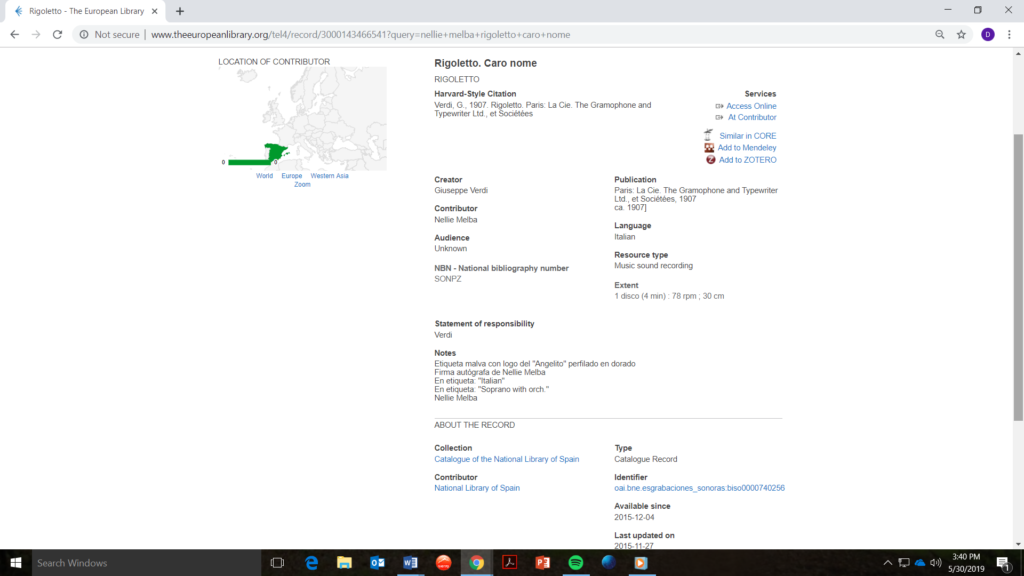
Numerous contributing libraries have uploaded images of historic newspapers they have digitized, and searching TEL makes their content readily discoverable. Newspaper results are accessible by clicking the “Newspapers” tab on a results screen, and clicking each entry leads directly to its full text:
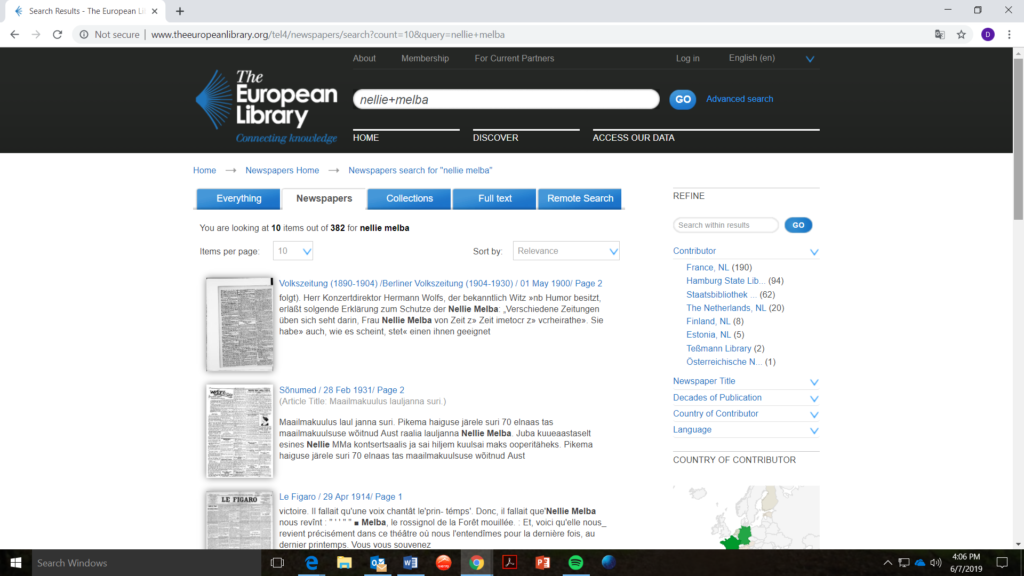
TEL’s provision for finding music content in many non-music publications makes it an excellent research companion to the subscription RIPM (Répertoire international de la presse musicale) database, which is clearly limited to music journals.
Now that the TEL portal is frozen, another portal, europeana.eu (EE), functions as its continuation. According to its website, this successor to TEL was an initiative of the European Union, financed by the Connecting Europe Facility and the European Union Member States. lts intent is to provide a vast and diverse European digital library.
Both theeuropeanlibrary.org (TEL) and europeana.eu (EE) have much more to offer than I can possibly cover in this short introduction. I am disappointed that, so far, none of the faculty and student scholars to whom I have recommended them even have been aware that they existed. Considering their immense research potential, these sources deserve to be much better known. I urge anyone who has not yet experienced them to pay them a visit.
Donna Arnold, Music Reference Librarian
University of North Texas Music Library
